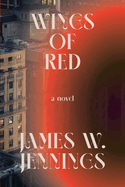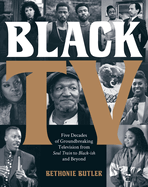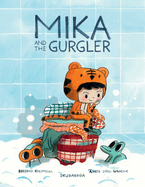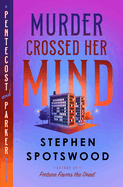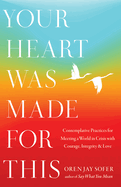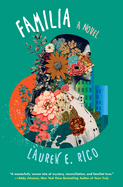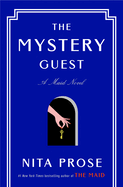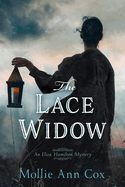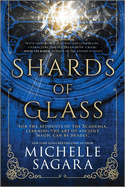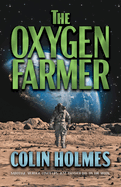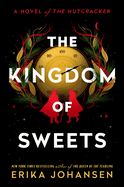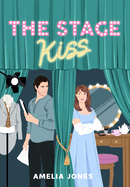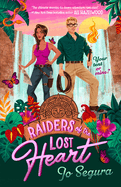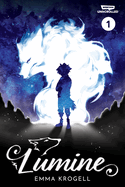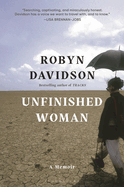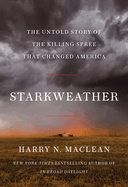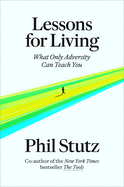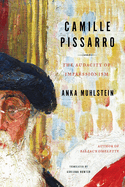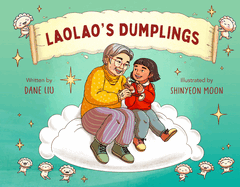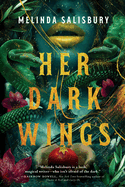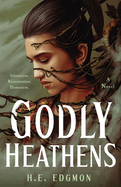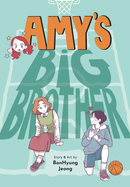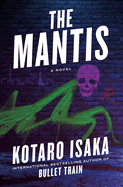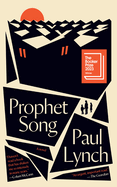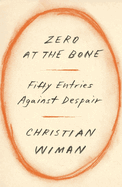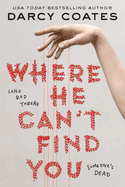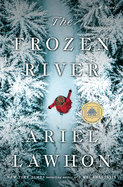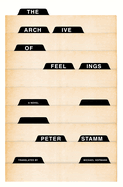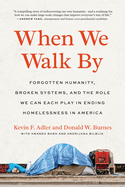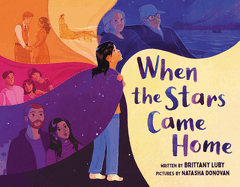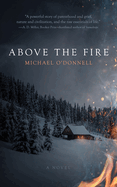Friday, December 29, 2023
As we gear up for the year ahead, we review a few titles to reframe the approach to challenges many of us face: Oren Jay Sofer gives readers "a gentle road map" and practical guidance for navigating a world in crisis in Your Heart Was Made for This; in 50 Ways to Rewire Your Anxious Brain, clinical psychologists Catherine M. Pittman and Maya Zayed Hoffman "offer actionable strategies and exercises to make the brain more anxiety resistant; and Phil Stutz describes obstacles to happiness and fulfillment, and steps to overcome them in Lessons for Living: What Only Adversity Can Teach You. Plus the adventures of a mischievous child in a tiger costume make for "an adorable comic book" for young readers in Agata Loth-Ignaciuk and Berenika Kolomycka's Mika and the Gurgler. And so many more!
In The Writer's Life, author-artist R.W. (Bob) Alley, shows off the breadth of authors and artists who continue to inspire him.
Wings of Red
by James W. Jennings
Writer and substitute teacher June Papers, who is homeless, trudges in and out of 24-hour cafés, New City Public School, and his subconscious ramblings in the introspective and spectacularly written Wings of Red by James W. Jennings. Jennings himself is a Black educator, and the novel as autobiographical fiction is clear through June's revealingly self-aware internal dialogue: "There I am. June Papers. Twenty-eight years old. MFA with a felony. The classic young, Black, and gifted American misfit." June never imagined he would hand out his novel, Strays, for free far more often than he would sell it; shower only occasionally; and find hope amid the long days subbing gym class and completing various odd jobs.
June's constant journaling gives his voice a diary entry-style narration. This striking format and June's intuitive perspective as a Black educator in New York City allows readers to dive into the mind of an incredibly multifaceted protagonist. Wings of Red, thought-provoking and engrossing, is a testimony to the rise, fall, and potential to rise again of creatives such as writers and educators. Jennings's lived experiences, captured here with students and educators in mind, grants the novel an authenticity.
June's not-so-carefree gallivanting around New York exposes the wonders and oddities of the city and the people in it. Understanding yet critical when necessary, the novel expresses love for New York, a powerful opposition to stereotypes, and an intimate look into the American dream. Wings of Red, which proves that no path to success is linear, is an important and relevant debut. --Clara Newton, freelance reviewer
Discover: Black educator James W. Jennings translates his lived experiences into true-to-life characters, creative narration, and nuanced storytelling in this introspective and spectacularly written novel.
Familia
by Lauren E. Rico
Self-described "longtime radio host and short-time writer" Lauren E. Rico quickly establishes Familia in the first chapter: Gabby DiMarco takes a genealogy test as research for her magazine job and finds not only "the wrong ethnic breakdown," but that she has "a full sister," Isabella Ruíz. Three hundred fast-paced pages follow, jumping back and forth between Gabby's and Isabella's narratives, from Today and That Day, to nimbly reveal the multilayered repercussions of what happened 25 years ago.
Gabby always thought she was the "only child of only children." She grew up happy, adored, privileged. In sending her DNA sample, she "hoped I'd find a long-lost cousin somewhere." She never expected to find Isabella and an enormous extended family in Puerto Rico--especially when she always believed she was of Italian descent. Her loving parents never even hinted she was adopted. For Gabby to believe Isabella is actually her sister is to admit that her parents were kidnappers who stole a seven-month-old baby from a widowed father and sister. So Gabby heads to San Juan, expecting to confirm the testing company has made a grave mistake.
Rico's novel is a love letter to her heritage, who proudly claims "sixty-nine generations of ancestors on the island dating back to the year 245 AD!" Her descriptions of the island's neighborhoods (especially street art), traditions (fairy-tale quinceañeras), and iconic dishes enable an immersive experience as the would-be sisters follow elusive leads and bypass previous dead ends. Even as Rico highlights connections by blood, she repeatedly reminds readers, "It's not about who we share our DNA with so much as who we share our heart with." --Terry Hong, BookDragon
Discover: Lauren E. Rico dexterously dissects a 25-year-old cold case involving a missing seven-month-old who, as an adult, may have returned to Puerto Rico to explore potential familial connections.
Mystery & Thriller
Murder Crossed Her Mind
by Stephen Spotswood
Another book in Stephen Spotswood's Pentecost and Parker retro mystery series means another go-round with his surpassingly entertaining narrator, Willowjean "Will" Parker. True to form, Parker wisecracks and innuendos her way through Murder Crossed Her Mind, leading with what she calls her "brass ovaries," which are situated below a new anatomical development: her aching heart.
The fourth novel in the series, which includes Fortune Favors the Dead and Secrets Typed in Blood, begins in September 1947, as criminal-defense attorney Forest Whitsun visits Brooklyn's Pentecost Investigations, named for Parker's famous and formidable boss, Lillian Pentecost. Whitsun wants the detectives to find his friend Vera Bodine, an elderly shut-in: she's gone missing from her Manhattan apartment. Whitsun got to know Vera back when he worked at the law firm where she was a secretary valued for her uncanny memory--so uncanny that, as she confided to Whitsun, the FBI used her as a Nazi hunter during the war. Could this have something to do with her disappearance?
Pentecost has become increasingly limited by her multiple sclerosis, so Murder Crossed Her Mind finds Parker doing a lot of legwork while making characteristically piquant observations ("Alathea looked like the kind of secretary who was hired to work on her back") and pining for her geographically estranged lady love ("Can a heart have a charley horse?"). After Pentecost solves Spotswood's beautifully crafted puzzle, the novel concludes with a cliffhanger--as if readers needed an enticement to return for the next installment in this irresistible series. --Nell Beram, author and freelance writer
Discover: The fourth book in the irresistible Pentecost and Parker retro mystery series centers on an elderly shut-in who has gone missing from her Manhattan apartment.
The Mystery Guest
by Nita Prose
The Mystery Guest by Nita Prose is a bright, dynamic continuation of her cozy mystery series that features Molly Gray, a lovable, learning-as-she-goes maid who works at the Regency Grand, an elegant, five-star boutique hotel.
In the first novel, The Maid, neurodivergent Molly struggled to navigate life after the death of her touchstone, her grandmother, "Gran," who spent her life working as a maid. Molly, then a meticulous maid-in-training, became swept up in a murder investigation of a hotel patron who called her and her co-workers into question. In The Mystery Guest, Molly's story picks up three-and-a-half years later. Molly, now 29, has been promoted to head maid at the Regency Grand, proving (as she puts it) that she is no "fly-by-night."
The hotel is eager to redeem its image, hosting J.D. Grimthorpe, a "world-famous," reclusive author. He is intent on making a major public announcement. Standing before a gaggle of press people and adoring fans in the Regency tearoom, he suddenly drops dead before the big reveal, sending Molly and those in her orbit into mayhem. Could it be that Grimthorpe was murdered? If so, why?
Prose deftly employs a familiar cast of quirky characters and adds a few new ones, each with dubious motives. As in the first book, Gran and her wisdom continue to influence Molly's smart perceptions. Molly's strong narrative voice mines experiences from the past that might hold clues to her solving this suspenseful and well-drawn second entry in the mystery series. --Kathleen Gerard, blogger at Reading Between the Lines
Discover: In this bright, dynamic continuation of a mystery series, a maid sets out to find the culprit when a world-famous author dies at a five-star hotel.
The Lace Widow
by Mollie Ann Cox
Reeling from her husband Alexander Hamilton's death in a duel, Eliza Hamilton is shocked to find her family is deep in debt. And that's before her son, Alexander Jr., is implicated in a murder. Mollie Ann Cox's gripping debut historical mystery, The Lace Widow, follows Eliza as she joins a group of strong-minded widows to find out who's killing off witnesses to the Hamilton-Burr duel--and figure out how to save her family's finances.
Cox, who also writes as Maggie Blackburn (Once upon a Seaside Murder), paints a nuanced portrait of Eliza: devastated by the loss of her husband but determined to protect her family, even if it means flouting society's rules and putting herself in danger. Her new friends, women who live independently in lower Manhattan, run a healthy business selling lace and textiles to affluent households, which means they know many of those households' secrets. To the horror of her sister, Angelica, Eliza begins selling her family's handmade lace, and she joins her friends in some clandestine investigations. As they dig deeper, Eliza uncovers connections to a sinister secret society as well as a long-ago plot to steal treasury monies, of which her husband had been accused before his death. Cox weaves a mystery plot with as many threads as Eliza's intricate lace, and she manages to bring it to a satisfying conclusion. Rich with historical detail, and full of brave and clever women, The Lace Widow is a worthy tribute to the woman Hamilton (in the musical) called "best of wives and best of women." --Katie Noah Gibson, blogger at Cakes, Tea and Dreams
Discover: Mollie Ann Cox spins an intricate, gripping historical mystery featuring Eliza Hamilton and a group of lacemaking widows as amateur sleuths.
Science Fiction & Fantasy
Shards of Glass
by Michelle Sagara
Two young friends work to uncover the truth behind magical killings in Shards of Glass, a complex and engrossing murder mystery with dark academia overtones, set in the fantasy world of the Chronicles of Elantra series by Michelle Sagara (Silence).
Robin and Raven grew up together in the warrens, the most impoverished section of the city, but now Robin has disappeared. Raven has no other friends, and she tracks him to the Academia, a recently rediscovered campus with a sentient mind represented by a magical avatar. The dragon who serves as the school's chancellor is recruiting new students, and Robin wants Raven to stay at the school with him. Years of living in and hiding from danger in the warrens have left Robin eager for a safe home. The Academia proves more perilous than it seems, however, when students turn up murdered, "two corpses when it should be impossible to even have one." Pieces of magic glass and metal that only Raven can see appear at the crime scenes. Only by excavating the truth about Robin's lost family and Raven's real identity can the two friends make the Academia safe again, but the price of the truth may be their friendship.
Sagara's deep and self-assured world-building brings heft to this spinoff of a long-running series. Multiple mysteries take center stage, but magical school accoutrements, such as a giant talking spider as school librarian, add a sense of fun. Familiarity with the series will help, but seasoned fantasy readers will find their footing quickly. --Jaclyn Fulwood, blogger at Infinite Reads
Discover: Two students must solve a series of murders threatening a magical campus in this complex and engrossing spinoff of Michelle Sagara's Chronicles of Elantra.
The Oxygen Farmer
by Colin Holmes
In the thrilling space adventure The Oxygen Farmer by Colin Holmes (Thunder Road), a lunar-dwelling curmudgeon discovers a secret that may not only endanger those who learn it--but also the entire human race.
Mil Harrison has lived and worked on the moon as an oxygen farmer for 35 years. He doesn't much like things or people that get in the way of his doing his job, so when his truck breaks down one day, he takes a shortcut through an Exclusion Zone on the way home for spare parts and stumbles across a mysterious facility--one that triggers a radiation warning when he approaches. His initial probing into what's hidden there results in the death of a young astronaut; his granddaughter's removal from a crew flying to Mars; and the possibility of a cover-up that may involve the person who is both chief administrator of the space agency and possible future vice president--who also happens to be Mil's daughter.
Holmes crafts a twisty thriller with conspiracies to spare, in which a small band of endearing characters will have to use all of their considerable skills to prevent the destruction of the moon and of life on Earth. There are some details of dialogue that make it hard to believe that Mil, so named because he was the first baby born in this millennium, is an aging member of Gen Z rather than a septuagenarian from today. Still, this is a rollicking science-fiction thriller that will please fans of Andy Weir. --Kristen Allen-Vogel, information services librarian at Dayton Metro Library
Discover: In this fast-paced science-fiction adventure, an aging lunar pioneer and his companions uncover a conspiracy that could destroy the world.
The Kingdom of Sweets
by Erika Johansen
The Kingdom of Sweets by Erika Johansen (The Fate of the Tearling; The Queen of the Tearling) transforms the classic Christmas fantasy The Nutcracker into a dark and gripping fable of envy, greed, and betrayal, all contained within a shell of decadent, twisted whimsy.
The wizard Drosselmeyer, whom everyone calls "godfather," comes to the Stahlbaum twins' christening like Sleeping Beauty's wicked fairy and names baby Clara "light" and baby Natasha "dark." Says narrator Natasha: "Clara could not see the hidden darkness of the world.... I was cursed to see." Clara grows up beautiful and favored, unlike her "short and lumpen" sister. The strain between siblings crescendos when Drosselmeyer announces at a Christmas Eve party that Clara will wed a handsome nobleman who has trifled with Natasha's affections. The magical nutcracker that Drosselmeyer gifts to Clara takes both girls into a magical land of gumdrop trees, living gingerbread men, and a candy castle housing the realm's beautiful but perilous queen, the Sugar Plum Fairy. She offers Natasha revenge and her heart's desire in return for helping the fairy access Drosselmeyer. Natasha accepts the bargain but soon learns the fairy's sweet facade hides a hungry darkness, and the desires of a rotten heart will bear only rotten fruit.
Johansen's stunning fantasy is set in the years leading up to the Russian Revolution, and weaves sinister magic into real-world events. Powerful character development keeps Natasha sympathetic, despite some of her less savory choices. This fractured fairy tale luxuriates in stunning set pieces; wild, brutal magic; and a surprisingly redemptive finale. --Jaclyn Fulwood, blogger at Infinite Reads
Discover: Erika Johansen's dark reimagining of the Christmas classic The Nutcracker is sharp, brilliant, and definitely not meant for children.
Romance
The Stage Kiss
by Amelia Jones
The Stage Kiss, Amelia Jones's debut romance, is a clever and charming retelling of Jane Austen's Pride and Prejudice that's sure to appeal to fans of Bridgerton and Abby Jimenez alike. Eden Blake finally catches her big break when she gets upgraded from standby to leading lady in the touring version of the Broadway hit Liz and Darcy: The Musical. The only problem is that Broadway legend Brennon Thorne is playing opposite her as Darcy, and he's broodier and more judgmental than his sterling reputation would have had her believe. But the more Eden's star rises beyond her cringe-worthy past as an infomercial actress--and the fierier each onstage kiss becomes--the more Eden and Brennon begin to realize that their chemistry might not just be an act.
Jones's knowledge of theater brings the Broadway charm of The Stage Kiss to life, offering an old favorite a fresh angle. The tension between standbys and leads, the unspoken judgment of commercial credits versus Julliard degrees, and the high-stakes press circuits all provide perfect opportunities for Jones to communicate the social stressors and class-based nuances that give Austen novels such texture. A well-developed cast of characters, including a handsome but laconic swing, a jealous onstage sidekick, and a naïve but good-hearted best friend, all complement this layered story. And to top it all off, Eden and Brennon prove to be a pairing worth cheering on. Funny, flawed, and yet fundamentally good people, they steal readers' hearts even while they often misjudge each other. --Alice Martin, freelance writer and editor
Discover: Debut novelist Amelia Jones's The Stage Kiss is a smart enemies-to-lovers adaptation of Jane Austen with plenty of the simmering heat of contemporary romance novels.
Raiders of the Lost Heart
by Jo Segura
There's a special energy in both classic romantic comedies and archeological adventure movies that debut romance novelist Jo Segura smoothly blends in Raiders of the Lost Heart, giving readers a pitch-perfect fusion of The Mummy's dangerous discoveries and You've Got Mail's rivals-turned-lovers plot. Archeologists Dr. Socorro "Corrie" Mejía and Dr. Ford Matthews are entrenched competitors, with "curvy" Latina Corrie having to fight harder to prove her worth in the field while handsome, blond Ford is seemingly handed opportunities right and left.
But when Ford's dig for the remains of an Aztec warrior begins to languish, Corrie is his only hope and--he knows--the expert who should have been overseeing the dig in the first place. Resentful but unable to turn down joining the dig of her dreams, Corrie arrives in Mexico determined to succeed with top billing. The pair's verbal sparring quickly balloons into something more, as long-dormant sparks flare to life. ("He stared at her, tenderly, like they were old friends rather than old rivals.") Ford tries to hide the personal reasons motivating his efforts, but as he and Corrie grow closer and something nefarious begins happening on the site, his secrets become harder to keep.
With unapologetically incredible moments--like Ford snatching a snake out of midair--as well as the satisfaction of a strong heroine and hero realizing they could be more together than they are apart, Segura's debut is an action-packed yet sweetly tender ride. The sweltering jungle is far from the only heat that will leave readers swooning. --Kristen Coates, editor and freelance reviewer
Discover: In this action-packed, rivals-to-lovers romance, competing archeologists find more than just historically significant remains on their journey through the jungle.
Graphic Books
Lumine, Volume One
by Emma Krogell
Lumine, comics-maker Emma Krogell's online series, debuted in 2017; it's since garnered almost 400 million views on the popular Webtoon platform. That success transfers to the printed page, as this intriguing inaugural volume of the same name collects the first 14 of almost 200 online episodes.
Lumine has lost his job--again. Causing havoc for his last employer got him fired without pay, and he's back to sleeping outside. He's startled awake by Kody, who's been separated from Aiden, his father--who, it turns out, is looking for Lumine. Although Lumine hasn't quite figured out how to "transform normally"--he turns into an adorable, fluffy white puppy who's not very scary when fighting off bad guys--Lumine proves himself a capable protector. He's hired as Kody's bodyguard because, as Aiden explains, "trouble follows him everywhere!" Cold, detached Kody is more annoyed than impressed, even resorting to poisoning Lumine to keep him away. Remarkably loyal, Lumine isn't deterred because, at the very least, Kody needs help surviving the many bullies at school.
Krogell expertly draws in a classic manga style: oversized, emotive eyes (Lumine's are notably heterochromatic blue andyellow); onomatopoeically augmented exaggerated action (AUGHs, CHOMPs, POOFs); comical caricatured insertions and interruptions. Her vibrant panels are non-regular throughout, with noticeably varying backgrounds--plain white, solid single colors, intricately detailed, digitally manipulated--enhancing a sense of unpredictability throughout.
Though Lumine is deservedly an internationally recognized series, brand-new audiences might want to avoid even the book cover description, which--ironically, perhaps unfortunately--reveals more than the actual episodes included here. Practicing patience for future volumes will surely be well rewarded. --Terry Hong, BookDragon
Discover: The popular webtoon Lumine debuts its inaugural print volume, introducing new readers to adorable, fluffy Lumine, young Kody's just-hired bodyguard.
Biography & Memoir
Loaded: The Life (and Afterlife) of the Velvet Underground
by Dylan Jones
Anyone who thinks there's nothing left to be said about the much-written-about Velvet Underground hasn't been listening to the right people. English journalist Dylan Jones (David Bowie) rounds them up for Loaded: The Life (and Afterlife) of the Velvet Underground, an oral biography by turns illuminating, amusing, unsparing, and, in the spirit of the band's notorious fractiousness, contradictory.
Loaded begins, inevitably, in New York City with Andy Warhol, the world's most mild-mannered Svengali; before discovering the Velvets, he had been thinking that, as Jones puts it, "he needed some kind of rock band as part of his extended family" of artists. The book covers the band's five-year existence, from 1965 to 1970; touches on members' post-Velvets lives and rancorous reunion in the early 1990s; and evaluates the band's place, time, prescience, and influence.
Jones has corralled insights from the Velvets and more than a hundred Velvets enthusiasts, either interviewing them for his book or incorporating their observations from previously published sources. Chiming in are the likes of Bono, Iggy Pop, Patti Smith, and David Bowie ("The Velvet Underground actually created modern music"). The non-household names tend to bring the wit, as when writer David Cavanagh notes that Velvets front man Lou Reed, who projected urban malaise, was actually "[r]aised on whatever the exact opposite of the mean streets are." Despite the connective tissue that Jones sometimes supplies between contributor comments, Loaded has a few jarring transitions, but this isn't heresy in a book about a band that preferred rough edges. --Nell Beram, author and freelance writer
Discover: This oral biography of the Velvet Underground is by turns illuminating, amusing, unsparing, and, in the spirit of the band's notorious fractiousness, contradictory.
Unfinished Woman
by Robyn Davidson
For years, Robyn Davidson (Desert Places; Tracks) has tried to write about her mother, a woman who hanged herself from the garage rafters with an electric kettle cord when Davidson was young. This is not a spoiler: readers will find this fact in the prelude of this finely textured memoir. Writing about an event Davidson describes as feeling no emotion for ("when I touch the area around that day, I can feel only callus") is tricky terrain, and yet Davidson pulls it off, helped by her curious and philosophical mind and precise choice in words.
In Unfinished Woman, the idea of memory and narrative--and how writing can reshape memory--is as much of a subject as the author's mother. Davidson probes her childhood and, later, her adulthood, searching for the truth about her mother's life--and her own: "What is the relationship between my mother's despair, and my own?" Readers of Davidson's work will find some similar themes, namely her peripatetic life and her interest in traditional nomadic cultures. However, in Unfinished Woman, her focus is on what caused her independence in the first place and how that self-reliance in later years turns detrimental to her mental well-being.
Although this is not a memoir with a hopeful message or tidy ending, Davidson infuses her sometimes-dark sentiments with a healthy dose of pragmatism. She writes: "People given to regret tend to forget that the road not taken might have turned into a dead end round the first bend." --Nina Semczuk, writer, editor, and illustrator
Discover: Unfinished Woman is a poignant resurfacing and questioning of memory, trauma, and a mother's suicide.
Social Science
Starkweather: The Untold Story of the Killing Spree that Changed America
by Harry N. MacLean
The U.S. lexicon in the 1950s did not include words like "mass murderer" or "serial killer"--not until Charlie Starkweather and Caril Ann Fugate came along. This is according to Harry N. MacLean's robustly researched and persuasive Starkweather, where new material and reporting update the horrific facts of America's first brush with mass murder. From January 21 to January 29, 1958, 19-year-old Starkweather--in the company of Fugate, his 14-year-old girlfriend (and potential accomplice)--brutally murdered 10 people in and around Lincoln, Neb.
MacLean (The Joy of Killing) delves into Starkweather's childhood being bullied and his "unique rage" that served his "magnetic fantasy of the outlaw gunning for his last showdown." The first victims of Starkweather's homicidal meltdown were Fugate's mother, stepfather, and baby sister, who were not discovered for nearly a week as the young couple shot, stabbed, and terrorized innocent people unlucky enough to cross their path. MacLean's "you-are-there," present-tense narrative of the murders is told through the eyes of both Starkweather and Fugate. MacLean is thorough and exhaustive in every phase of the Lincoln murders (testimony, trial, and aftermath) and boldly takes up the controversial "hostage theory" Fugate's lawyers invoked. He also shares insights on Fugate's mental state, applying a modern understanding of PTSD and brain chemistry.
Lincoln itself becomes the last victim, as "the days of paralyzing fear were now threaded into the nervous system of the community." Starkweather is definitive, gripping, and sure to stir up debate on a dark moment in U.S. history. --Peggy Kurkowski, book reviewer and copywriter in Denver
Discover: A fresh look at the Starkweather murders in 1950s Nebraska delivers new material, reporting, and conclusions on Caril Ann Fugate's role and the cultural repercussions of the slayings.
Psychology & Self-Help
Your Heart Was Made for This: Contemplative Practices for Meeting a World in Crisis with Courage, Integrity, and Love
by Oren Jay Sofer
Oren Jay Sofer (Say What You Mean: A Mindful Approach to Nonviolent Communication) offers practical guidance for navigating a world in crisis in Your Heart Was Made for This.
"How do we make love our guide?" is the central question Sofer answers in the book's 26 chapters, collectively meant to serve as a year-long framework for readers interested in using contemplative practice to face challenges including climate crisis, health pandemics, "the ongoing trauma of injustice and oppression rooted in colonialism," and burnout. Each chapter focuses on a quality, defined by Sofer as "distinct, holistic patterns of energy, with their own signatures, functions, and behaviors" that are "broader than emotions, intentions, or mental states." Qualities such as mindfulness, empathy, equanimity, forgiveness, and rest are introduced and defined, and the author incorporates prompts for reflection, meditation, and action to help readers put each quality into practice. These inclusions make this a standout among literature on philosophy and mindfulness.
Readers will take away from this gentle road map: how to build healing practices, strengthen what Sofer calls "heart qualities" (by applying "patience, kindness, and ease" in order to "etch those grooves deeper" than the ones carved by anxiety and stress), and develop inner resources to meet challenges and create positive change. Your Heart Was Made for This is a softening--a hopeful solution in a time of overstimulation and the commodification of the mindfulness movement. This guide helpfully breaks down Buddhist teachings for both the well-practiced and the novice. --Sydney Tillman, freelance publicist
Discover: Your Heart Was Made for This is an empathetic response to a world in crisis.
Lessons for Living: What Only Adversity Can Teach You
by Phil Stutz
Phil Stutz (Coming Alive), a Hollywood psychiatrist featured in 2022's Netflix documentary Stutz, returns to the page in Lessons for Living: What Only Adversity Can Teach You. For years Stutz has provided advice for a better life. Here he describes obstacles to happiness and fulfillment and gives actionable steps to overcome them. Readers of The Tools, his bestselling book from 2012, which was co-written with Barry Michels, will recognize many of the mental techniques described in Lessons for Living. This time, however, the format is a series of easily digestible short essays that were originally written for a print newsletter from the late 1990s and early 2000s, which have been updated in light of the Covid pandemic.
He makes a strong case for the necessity of bolstering mental fortitude in times of unrest and high anxiety. In his characteristically direct manner, Stutz insists readers take responsibility for their lives if they want to find meaning. Many essays are bolstered by anecdotes taken from his private practice. For instance, in "Rising Above Envy," Stutz describes an up-and-coming actress who was jealous of her best friend's career. Eventually, the actress loses the friendship and finds fame, yet is still unhappy. Stutz breaks down why that is--and how she was able to find contentment.
Personal-development enthusiasts who've read Dale Carnegie or Wayne Dyer or have attended a Tony Robbins seminar will feel right at home. For the uninitiated, however, Stutz's frequent invocation of higher forces and the occasional bashing of traditional psychotherapy and medication may be a turn-off. --Nina Semczuk, writer, editor, and illustrator
Discover: Lessons for Living offers pithy self-help vignettes from a famous, action-oriented psychiatrist.
50 Ways to Rewire Your Anxious Brain: Simple Skills to Soothe Anxiety and Create New Neural Pathways to Calm
by Catherine M. Pittman and Maha Zayed Hoffman
50 Ways to Rewire Your Anxious Brain: Simple Skills to Soothe Anxiety and Create New Neural Pathways to Calm presents actionable advice to combat the distress and limitations caused by chronic worry and make lasting changes in the brain to make it more anxiety-resistant. Catherine M. Pittman (Rewire Your Anxious Brain) and Maya Zayed Hoffman, licensed clinical psychologists who have dedicated their careers to understanding and treating neurological disorders, describe what they call the "shape" of anxiety, and guide readers toward understanding the contours, textures, and triggers of their anxiety experiences, with the ultimate goal of helping them create individualized exercise plans for calming those areas of the brain where fear, dread, panic, and anxiety originate.
Over the course of 50 brisk chapters, readers will learn how to "change the channel" on anxious thoughts, reduce compulsions, reframe fears, practice exposure exercises, and learn to diffuse terrifying, unwanted thoughts. For example, the simple mood-enhancing act of practicing genuine gratitude can, over time, profoundly alter our response to anxiety triggers.
The authors share tried and tested techniques to rewire the part of the brain called the amygdala, and train it to respond differently to threats. Because the emotional and physical responses from the amygdala are activated by the cortex, they include exercises for resisting "the cortex traps," such as instructions on how to stop holding oneself to unrealistic standards of perfection. With immediate practical application, the exercises in this book can transform the quality of life for those struggling with chronic tensions. --Shahina Piyarali, reviewer
Discover: Two clinical psychologists who have dedicated their careers to treating neurological disorders offer actionable strategies and exercises to make the brain more anxiety resistant.
Gardening
The Lean Micro Farm: How to Get Small, Embrace Local, Live Better, and Work Less
by Ben Hartman
There are few things more Zen than reading a great gardening book. The Lean Micro Farm: How to Get Small, Embrace Local, Live Better, and Work Less by Ben Hartman provides more than a satisfying mental walk through the garden. It's full of inspiration--not only for micro farms but also for how to live a simpler, more sustainable, and fulfilling life.
"I worried that less land in production--cutting it by more than half--would decrease our income. It didn't.... I underestimated the power of a carefully set limit, adhered to with creativity and discipline, to inspire better work." Hartman (The Lean Farm Guide to Growing Vegetables) presents thoughtful pearls of wisdom that spur readers to reconsider the structure of their own lives, whether that involves growing a greenhouse full of heritage tomatoes or setting aside exactly 30 minutes each morning for a creative pursuit. Sometimes, he notes, limits can result in more, not less.
Sections highlight different approaches to farming around the globe, broadening the concept of how food can be produced and what that can mean for the community and the people growing it. Who knew that musician Gregory Alan Isakov spends his winters touring and summers farming near Boulder, Colo.? Tamara Bogolasky runs a small farm in Chile, part of a local movement away from big agriculture. She gives food to potential customers to taste in an effort to convince them to reconsider the entrenched local habits of store-bought, monoculture food. There are stories and life lessons both big and small in Hartman's pages. --Carol Caley, writer
Discover: In this how-to guide on local micro farming, Ben Hartman shares insights on growing food simply and sustainably, and prompts broader questions about how to live a good life.
Performing Arts
Black TV: Five Decades of Groundbreaking Television from 'Soul Train' to 'Black-ish' and Beyond
by Bethonie Butler
In Black TV: Five Decades of Groundbreaking Television from 'Soul Train' to 'Black-ish' and Beyond, Bethonie Butler tips her hat to Donald Bogle's Primetime Blues, an encompassing history of African Americans on television. With her likewise invaluable contribution, Butler presents more of a highlights reel, encouraging readers to "make some popcorn" before digging into this 50-odd-series showcase.
In her introduction, Butler defines her terms: Black TV is "a celebration of shows that center Black people and their experiences, without tethering those experiences to the white people in their midst." Hence, Butler skips Beulah, a sitcom about a Black maid, but spotlights the breakout sitcom Julia, in which Diahann Carroll made history in 1968 as the first Black woman to star in a prime-time network series as something besides the help. Black TV rehashes many firsts: in 1989, The Arsenio Hall Show became the first late-night talk show with an African American host; in 2016, Issa Rae's Insecure marked the first time a Black woman created and starred in a premium cable series; and so on.
As she works her way chronologically through the Black TV landscape, Butler touches on the featured shows' inception, longevity, and legacy. Especially probing are her looks at network receptivity to the proposed shows, Black contributions behind the scenes, and the ageless question of whether Black TV series are obliged to paint a rosy picture of Black America. Awash with photos, Black TV is like many of the shows Butler profiles: no less entertaining than elucidating. --Nell Beram, author and freelance writer
Discover: This entertaining and elucidating highlights reel of sorts honors 50-odd TV shows centered on African Americans.
Art & Photography
Camille Pissarro: The Audacity of Impressionism
by Anka Muhlstein, transl. by Adriana Hunter
Anka Muhlstein's Camille Pissarro: The Audacity of Impressionism, translated from the French by Adriana Hunter, provides an in-depth and insightful exploration of the life and artistry of Pissarro, a seminal figure of impressionist painting.
The book delves into Pissarro's formative years in the Danish West Indies; his journey to the bustling streets of Paris; his evolving style, influences, and artistic philosophy; and the pivotal role he played in the development of impressionism. Readers learn intimate details of Pissarro's family life, ongoing economic challenges, and the role that Judaism played in his career.
Muhlstein (Balzac's Omelette; Monsieur Proust's Library) explores Pissarro's many friendships with some of the most significant artists of the time (Renoir, Cézanne, Monet, Berthe Morisot, etc.), the social and political upheaval of the 19th century, and how these factors influenced Pissarro's work.
The author demonstrates why Pissarro's views "can't be mistaken for those of his fellow artists. The subject of the painting--the aspect that jumps out at any observer--is not what mattered most to Pissarro. The key for him, and herein lay the difficulty, was to establish the connection between the different elements: sky, terrain, water, walls, and human figures."
Muhlstein offers a comprehensive look at the life and art of a true pioneer in the world of impressionism--and a portrait of a complex and kind human being. Lovers of art history or well-told biographies will savor this book, which provides a deeper understanding of Pissarro's substantial legacy. --Elizabeth DeNoma, executive editor, DeNoma Literary Services, Seattle, Wash.
Discover: Anka Muhlstein presents an exhaustive and intimate look into the work of Camille Pissarro, one of the most important artists of impressionism.
Children's & Young Adult
Mika and the Gurgler
by Agata Loth-Ignaciuk, illus. by Berenika Kolomycka
The adventures of a mischievous child dressed in a tiger costume make for an adorable comic book for young readers in author Agata Loth-Ignaciuk and illustrator Berenika Kolomycka's Mika and the Gurgler. Much like its predecessor, Mika and the Howler, this title uses minimal text to tell a grand story.
Toddler Mika follows their laundry-toting parent to the closet. There the child encounters a mysterious device with a door set at Mika height. The toddler crawls in and the machine spins. "Look, Frog! A merry-go-round!" Mika squeals before giving Frog a turn. As the stuffed animal completes dizzying spins, Mika's parent fills the merry-go-round with clothes, shuts the door, and "beep"s some buttons. This is no longer an amusing game--this is a gurgling, whirring, shaking monster. Mika recruits stuffed animal friends Spider and Caterpillar to figure out how to save Frog from the gurgler.
The lack of text in Loth-Ignaciuk's sweet story does not limit its depth. Kolomycka's animated illustrations include striking nuances: delightfully evil expressions adorn the gurgler; an explosion of colors, symbols, lines, waves, and characters visually narrate the battle between child and machine; and Mika's emotions and determination radiate from their young face. Expertly accenting Kolomycka's genius art is lettering by Crank! that shows the auditory clash between Mika and the gurgler. The trio responsible for this delightful childhood exploit shows a true understanding of how extreme the experiences of daily life can be for a toddler, and have blended their talents seamlessly for an exciting literary triumph. --Jen Forbus, freelancer
Discover: A toddler goes to battle with the mysterious gurgler in order to save her friend Frog in an endearing comic book for early readers.
Laolao's Dumplings
by Dane Liu, illus. by ShinYeon Moon
Commemorating foods that cement generational bonds is a popular narrative in children's books. Writer and journalist Dane Liu (Friends Are Friends, Forever), born in China and raised in the U.S. and Canada, augments that familiarity with a rare poignancy in Laolao's Dumplings, a picture book that may gently help young readers face the loss of an older loved one. Korean American artist ShinYeon Moon's exquisitely detailed, culturally empathic illustrations add sensitivity and depth.
For young Millie, a visit to Laolao's home often means making dumplings, which necessitates a bountiful trip into Chinatown for the freshest ingredients--as well as visiting all the friendly shopowner aunties and uncles. By the following fall, however, Laolao is "too tired to make dumplings"; snuggling is best. By winter, Millie and her parents deliver Laolao's meals... including Millie's version of Laolao's delectable dumplings.
Moon's art enhances Liu's text with additional elements that perhaps only pictures can relay without awkward over-explication. The front endpapers are filled with colorful platters of various dumplings; the back endpapers show enjoyed, emptied plates. Before the story begins, Moon (Shiny Happy People) reveals Millie's mixed-race background and an author's note tells non-Mandarin speakers that "Laolao" specifically means "maternal grandmother." Millie and Laolao wend through the diverse crowds and welcoming stores in the buoyant hustle bustle of Chinatown, where they test fresh chives, and sample lychees and icy shrimp. With hints of such toothsome fare, Liu must--of course--append her "no longer secret" dumpling recipe. Author and artist gorgeously celebrate the nurturing power of sharing food and family. --Terry Hong
Discover: In this warmly poignant picture book, Millie learns how to make delicious dumplings with her grandmother--so that she can make them for Laolao when Laolao no longer can.
Her Dark Wings
by Melinda Salisbury
Her Dark Wings is a fierce and fanciful tale wherein a spurned young woman's accidental interaction with Hades causes a mythically sized shift in her life as well as massive changes in the Underworld.
Corey Allaway has been betrayed. It's always been "Bree-and-Corey, Corey-and-Bree," but the summer they're 17, Bree cuts Corey out of the picture and takes up with Corey's ex-boyfriend, Ali. Corey, hurt, humiliated, and extremely angry, kisses a "random" boy at a bacchanal to honor Demeter while wishing with her "whole heart" that Bree would be "dragged to the Underworld and left there to rot." Shortly thereafter, Bree's body is found in the lake "flirting with the weeds." When Corey learns the boy she kissed is Hades himself, she realizes her desperate wishing may have caused Bree's death. Though Corey would like to be left alone to process her feelings, she is dragged to the Underworld, where three winged Furies want her to join them in their "inhumane" punishment of "guilty" shades.
Her Dark Wings is a feisty, compelling modern-day retelling of the Persephone myth. Melinda Salisbury (The Sin Eater's Daughter series) smoothly shifts between Corey's unlikely, god-filled present and her recollections of the lies and betrayals she suffered at the hands of her two exes. These deceptions continue to shape her future as she navigates harsh and unforgiving landscapes in the Underworld. There are gods and magic, yes, but above all looms the question of what it means to be human. --Lynn Becker, reviewer, blogger, and children's book author
Discover: The fierce and fanciful Her Dark Wings is a modern retelling of the Persephone myth wherein a young woman kisses Hades and her ex-best friend winds up dead--perhaps consequently.
Godly Heathens
by H.E. Edgmon
For queer teens looking for the vicious and the morally ambiguous, H.E. Edgmon's ferocious Godly Heathens delivers a pantheon of villainous gods wreaking havoc on a small Southern town.
Gem Echols has no desire to stay in Gracie, Ga. As long as the biracial, Seminole teen keeps their grades up, takes their medication, and ignores the haunting dreams of otherworldly murder that plague their sleep, they can survive until graduation and join their long-distance "friend" in Brooklyn. But when strangers roll into town and attempt to kill them, Gem learns the truth: they are the Magician, a reincarnation of the strongest deity in a pantheon of gods from an alternate Earth. It was the Magician's actions that led to the gods being trapped on Gem's Earth, and many of the pantheon want Gem dead.
Edgmon (The Witch King duology) crafts a brutal homage to queer perseverance in this bloody young adult fantasy. The author fills the pages with queer teenagers doing understandably terrible things with their unfathomably powerful magic as they campaign for prom queen or try to keep up with their Discord chats. Readers who self-describe as "unhinged" or "feral" will happily latch onto the litany of morally ambiguous deities, even if the character design of said deities is somewhat deficient. But what Godly Heathens lacks in worldbuilding, it makes up for with escapist fury and visceral joy that will please fans of Amanda Foody and C.L. Herman's All of Us Villains and Andrew Joseph White's Hell Followed with Us. --Nicole Brinkley, bookseller and writer
Discover: Southern teen Gem discovers they are the reincarnation of the Magician, a doomed yet powerful god from an alternate Earth, in this ferocious YA novel for fans of Hell Followed with Us.
Amy's Big Brother
by BonHyung Jeong
BonHyung Jeong returns to characters met in her adorable 2021 debut, Kyle's Little Sister, in her wise and whimsical graphic novel Amy's Big Brother.
Amy's big brother is Andrew, Kyle's buddy. Amy and Andrew don't always get along. Andrew, who reads as Asian, was adopted at age one by white parents who "fell in love with [him] at first sight. But then... they got Amy." Andrew is convinced Amy is "totally aware" of the privilege she receives for being their parents' "biological" child. He's hoping to escape her manipulative crying and never-ending demands because he's finally starting middle school--where Amy can't tag along. Without her constantly needing attention, Andrew can hang out with his friends and take the first step to achieving his basketball star dreams. What he didn't prepare for is falling for new girl Hannah. Negotiating romance is a whole new ballgame. When what Andrew hoped "would be the best year ever" feels like anything but, Amy just might help by being the best sister ever.
As with Kyle's Little Sister, Jeong's enthralling, energetic, full-color panels are often worth an additional thousand words: the basketball team needs only a snapshot to show its diversity and dynamism; a besotted Andrew isn't exactly studying history in class. Jeong's multilayered, empathic artistry creates another inviting, convincing dramedy that never minimizes oversized adolescent emotions. With insight and humor, Jeong adroitly explores acceptance, belonging, and lovability--at home and at school. Sure, siblings rival, but families rule. --Terry Hong
Discover: BonHyung Jeong's wise and wonderful middle-grade graphic novel shines the spotlight on transracial adoptee and basketball star wannabe Andrew.
Shelf's December Stars
The Writer's Life
Reading with... R.W. (Bob) Alley
 R.W. (Bob) Alley has been illustrating original stories since he was a child growing up in South Carolina and Maryland. With more than 100 titles to his credit, Alley may be best known as the illustrator for all of Michael Bond's Paddington Bear books for nearly 30 years. His books have been on bestseller lists and received many awards, including a Geisel Honor and a Washington Post Best Book of the Year. Firefighters to the Rescue! (Kane Press/Astra Books for Young Readers) is the first in a series of community-oriented picture books that he has both written and illustrated.
R.W. (Bob) Alley has been illustrating original stories since he was a child growing up in South Carolina and Maryland. With more than 100 titles to his credit, Alley may be best known as the illustrator for all of Michael Bond's Paddington Bear books for nearly 30 years. His books have been on bestseller lists and received many awards, including a Geisel Honor and a Washington Post Best Book of the Year. Firefighters to the Rescue! (Kane Press/Astra Books for Young Readers) is the first in a series of community-oriented picture books that he has both written and illustrated.
Handsell readers your book in 25 words or less:
A crew of anthropomorphic firefighters zooms through a dramatic but reassuring introduction to firefighting equipment and procedures, featuring many diagrams and a little ice cream (melted).
On your nightstand now:
Nighttime reading is novel-reading time. Right now, the reading light is clipped to Demon Copperhead by Barbara Kingsolver. Could the social commentary and surprising, fresh language of Dickens's David Copperfield be reborn in the Appalachian Mountains? Indeed, it can.
Also clipped: a well-illustrated biography of Raymond Briggs by Nicolette Jones. Helpfully entitled Raymond Briggs, it is part of the excellent Thames & Hudson Illustrators series. Reading bios of other kid lit creators is a good way not to feel lonely in this sometimes-solitary enterprise.
Favorite book when you were a child:
The Sailor Dog by Margaret Wise Brown and illustrated by Garth Williams in its original Little Golden Books format. I was slow at understanding words but quick at reading pictures. This book hit the sweet spot. Words used for motivations, pictures for actions and scenes. As I learned to recognize letters as word pictures, The Wonderful Wizard of Oz by L. Frank Baum became a favorite, as did The Wind in the Willows by Kenneth Grahame. It was then I noticed the difference between illustrations that decorate a story and illustrations that drive the storytelling. Ernest Shepard's bright and sharp drawings are integral to Grahame's story; not so W.W. Denslow's decorations depicting Oz.
Your top five authors:
Of course, you mean...
Your top five author/illustrators:
Understanding that five is way too small a number AND that everyone currently making illustrated books are doing their absolute best, most heartfelt work, I will list creators who are no longer with us, but come easily to mind as I glance around my bookshelves:
Jean De Brunhoff, Tove Jansson, Geoffrey Hayes, Edward Ardizzone, Raymond Briggs, William Steig, Richard Scarry.
Book you've faked reading:
Depending on whom I'm trying to impress, these would include almost any book of verse, ancient or modern. Not that I don't try, but the words all seem to get fuzzy and go sideways. Understandably then, I fudge Shakespeare primarily through illustrated scenes and snippets of film. It's shameful really. Although clearly not so shameful that I shy away from admitting it here. Maybe I'm hoping for a support group of the unversed?
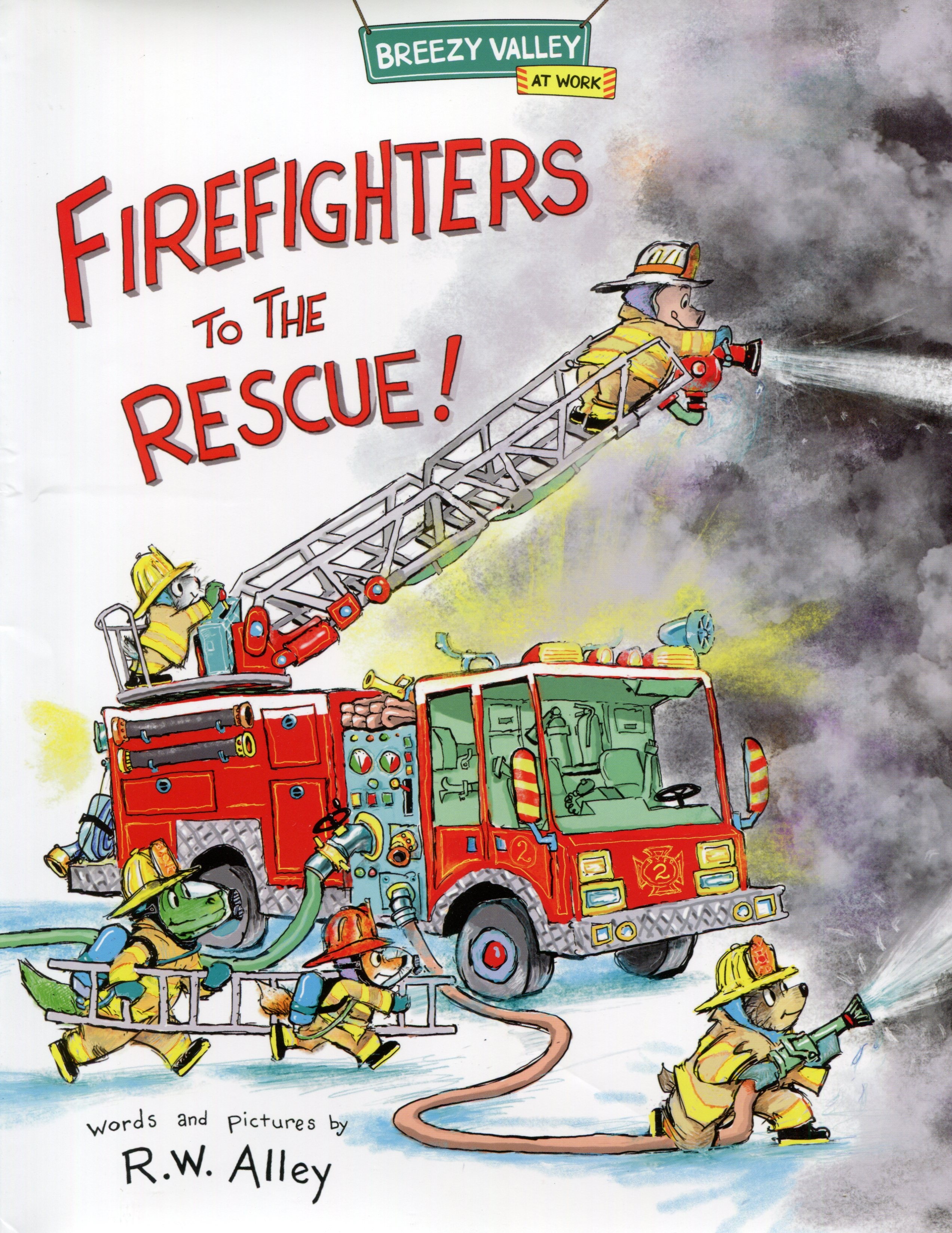 Book you're an evangelist for:
Book you're an evangelist for:
I'll offer three answers:
In the world of picture books, an underappreciated set of five books by New Yorker illustrator Charles E. Martin are wonderful. Island Winter (Greenwillow, 1984) began the series set on Monhegan Island in the Gulf of Maine.
In the illustrated long-form genre, The Stray by Betsy James Wyeth, illustrated by Jamie Wyeth (Farrar, Straus & Giroux, 1979) reminds me so much of The Wind in the Willows in both plot and pictures.
My adult selection is Raymond Briggs's autobiographical Time for Lights Out (Jonathan Cape, 2019) in which he reviews his life and career.
Book you've bought for the cover:
So many. I'm looking around the room again. Ah... The Barnabus Project by Terry, Eric, and Devin Fan. A picture book that more than lives up to its cover promise.
Book you hid from your parents:
That would be my sketchbooks. Once I got to high school this drawing and writing business was not to be encouraged as serious enterprise. These things were the pursuits of garret-dwelling, thin-broth-slurping, consumptive types who saved newspaper to line their shoes. Certainly not the proper goals of a split-level-living, beef-fed, only child.
Book that changed your life:
A Bear Called Paddington by Michael Bond. When I was asked to audition to illustrate a new suite of Paddington picture books, I read all the novels in order. I felt an instant connection to both bear and author. My enthusiasm continues.
Favorite line from a book:
Circling back to The Sailor Dog, I think the opening few lines are themselves a master class in how to write a picture book text. The book begins: "Born at sea in the teeth of a gale, the sailor was a dog. Scuppers was his name. After that he lived on a farm." What?! And, yet, perfect, because the story is all about Scuppers reclaiming a part of himself that's been lost. The why and how of the loss is not important. No back-story is needed. No villain. No event. Skip all that and get moving forward on Scuppers' quest and resolution.
Five books you'll never part with:
I didn't know you COULD part with a book once you acquired it. You only make more bookshelves, right?
Book you most want to read again for the first time:
I would love to be my six-year-old self encountering my favorite Little Golden Books for the first time. Especially BEFORE I could read. That's the thing about reading. Once you learn how to read, you can't not read. Even if you don't know the language, I think you still try to puzzle out the letters for a moment. And in that moment, the primacy of the image is lost. That's why I wish in art museums the labels were well away from the paintings, and in parks the description of all things involving the view was tucked off to the side.
In my adult life, I'd list John Irving's The World According to Garp, Douglas Adams's The Hitchhiker's Guide to the Galaxy, and John Kennedy Toole's A Confederacy of Dunces. Although, since time and place always inform the reading, the experiences would likely be different.
Why make picture books?
I think all children need places to go that they can control in their own time and in their own way. This is the special thing about a book. Especially an illustrated book. If you've ever watched a child holding a book on their lap, their face close to the page, concentrating hard, then you know exactly why making picture books is so important and so rewarding.
Book Candy
Book Candy
CrimeReads investigated "how the soldier-readers of World War II were swept up in the paperback revolution."
---
"You bull's pizzle! Breaking down 10 iconic Shakespeare insults." (via Mental Floss)
---
"The rule-breaking audio descriptions of Netflix's All the Light We Cannot See point to a greater accessibility triumph," Mashable reported.
Rediscover
Rediscover: Joan DeJean
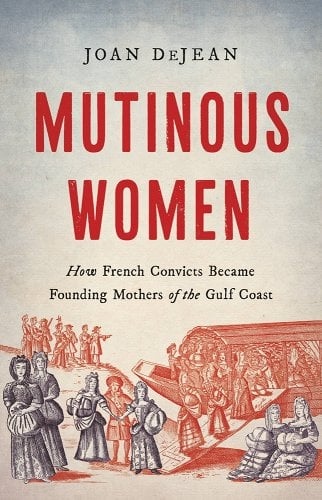 Author and scholar Joan DeJean, who "was recognized with numerous honors and awards for her work on women's writing, the history of sexuality, the development of the novel, and material culture," died December 2 at age 75, the University of Pennsylvania's Almanac reported. DeJean was Trustee Professor Emerita of Romance Languages in the School of Arts & Sciences at Penn, and a renowned scholar of 17th- and 18th-century French literature.
Author and scholar Joan DeJean, who "was recognized with numerous honors and awards for her work on women's writing, the history of sexuality, the development of the novel, and material culture," died December 2 at age 75, the University of Pennsylvania's Almanac reported. DeJean was Trustee Professor Emerita of Romance Languages in the School of Arts & Sciences at Penn, and a renowned scholar of 17th- and 18th-century French literature.
Her 12 books include The Age of Comfort: When Paris Discovered Casual and the Modern Home Began, which was named one of 2009's top art and architecture books by the New York Times. She received the 2002 Modern Language Association's Aldo and Jeanne Scaglione Prize for French and Francophone Studies for her book The Reinvention of Obscenity: Sex, Lies, and Tabloids in Early Modern France.
DeJean was awarded fellowships from the John Simon Guggenheim Memorial Foundation, the National Endowment for the Humanities, and the American Council of Learned Societies for her research. Her work on fashion and style in pre-Revolutionary France gained notice widely through interviews in venues such as NPR, the New York Times, and Rick Steves' Europe, the Almanac noted.
"Joan was a pioneer in the feminist readings of French texts, and in the feminist literary critical movement, a field that was neglected for many years," said Lance Donaldson-Evans, a former colleague in Penn's department of French and Francophone studies. "I know very few scholars who were as passionate about their scholarship as Joan."
Her other works include Scarron's Roman Comique (1977); Tender Geographies: Women and the Origins of the Novel in France (1991); Fictions of Sappho, 1546-1937 (1989); Literary Fortifications (1984); Libertine Strategies (1981); Ancients Against Moderns: Culture Wars and the Making of a Fin de Siècle (1997); The Essence of Style (2005); and How Paris Became Paris: The Invention of the Modern City (2014).
In 2020, DeJean was elected a fellow of the British Academy for the humanities and social sciences. In 2021, the American Association of Teachers of French (AATF) published a volume of essays in her honor: How to Do Things with Style: Essays in Honor of Joan, edited by Amy S. Wyngaard and Roland Racevskis.
DeJean's book Mutinous Women: How French Convicts Became Founding Mothers of the Gulf Coast (2022) led to the creation of an interactive digitized map that situates these women's biographies in New Orleans settlements.


